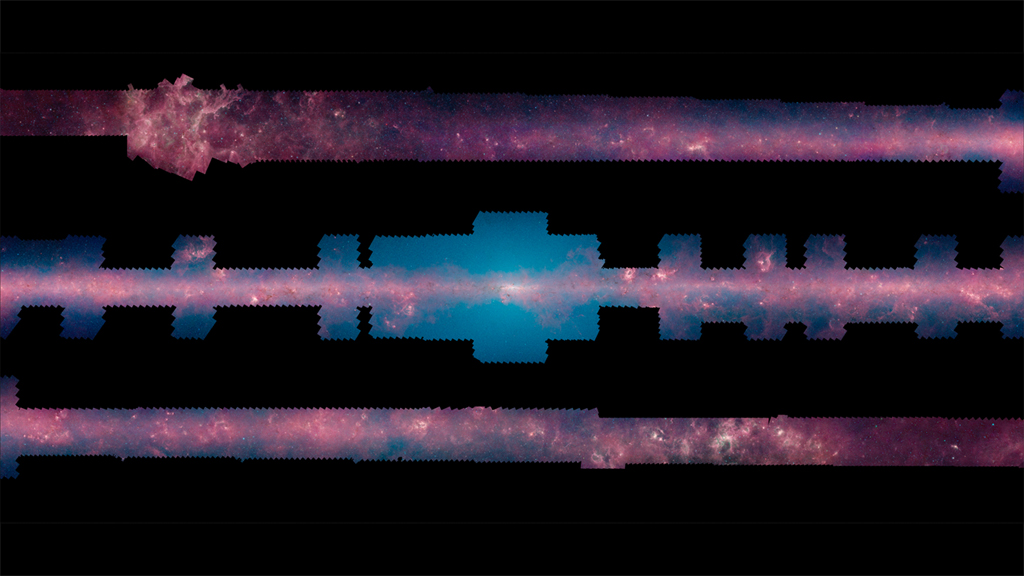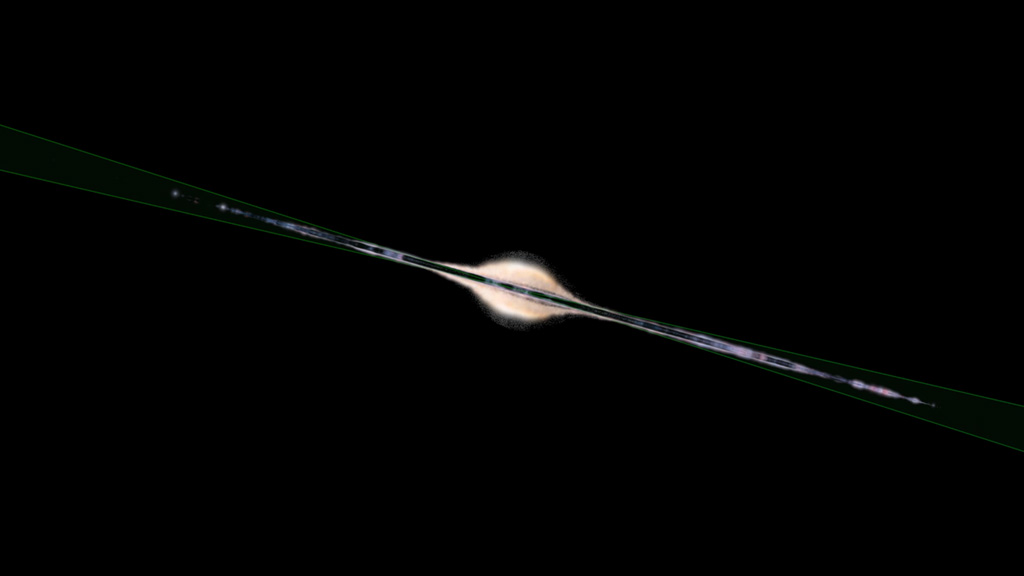Universe
ID: 11543

Light shining from stars in the Milky Way can take thousands of years to reach our eyes. That is, if clouds of interstellar gas and dust don’t get in the way. But dust isn’t just some astronomical nuisance. These tiny particles may one day condense into newborn stars, which may then go on to host a system of planets. Over the past 10 years, NASA’s Spitzer space telescope has snapped more than 2 million images of the Milky Way’s gas, dust and stars in infrared light—a type of light that is invisible to humans but pierces through dense cosmic clouds. Now, the images have been stitched into a seamless portrait that provides a 360-degree view of our galaxy from the perspective of Earth. Watch the video to learn more.



Galaxy Panorama




For More Information
Story Credits
Please give credit for this item to:
NASA's Goddard Space Flight Center
Video and images courtesy of NASA/JPL-Caltech
NASA's Goddard Space Flight Center
Video and images courtesy of NASA/JPL-Caltech
Short URL to share this page:
https://svs.gsfc.nasa.gov/11543
Keywords:
SVS >> App
NASA Science >> Universe
https://svs.gsfc.nasa.gov/11543
Keywords:
SVS >> App
NASA Science >> Universe







